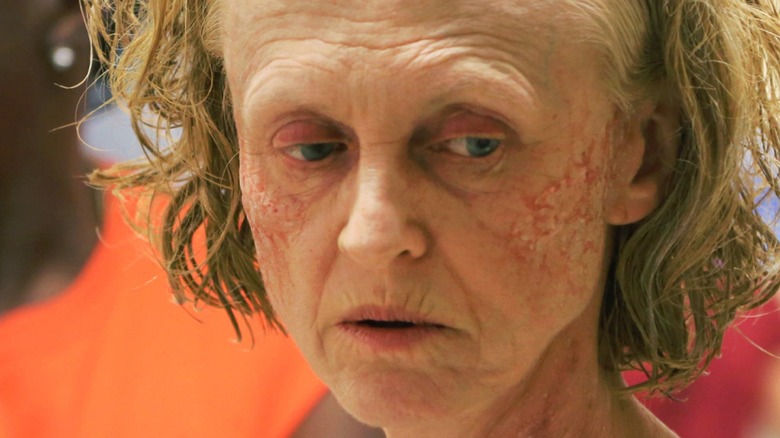
Often maligned as a lesser horror subgenre, found footage movies can, at their best, reflect the technical omniscience of handheld surveillance while preserving the intimate, raw-nerve terror of whichever (usually ill-fated) character is holding the camera. Permitting audiences a front-row seat to whatever horrors befall their protagonists, found-footage offers no guarantee of anyone's survival save the camera's.
It's no wonder that the subgenre exploded after 9/11 became the first viral terror attack, its events playing out across thousands of disconnected phone screens, the totality of which traumatized a nation. With its images of video feeds, pixelated shadows, and petrified faces thrust into view, found footage emulates the personalized, handheld sensations of smartphone-era self-documentation and exploited the anxieties of the era with visceral, emotional intensity.
In a found footage movie, horrors are inescapable and unknowable. They lurk out of sight, then surge forward, overwhelming both the spectator and their lens. Here are 12 films that cement found-footage as a uniquely modern, nerve-shattering horror format.
The Blair Witch Project
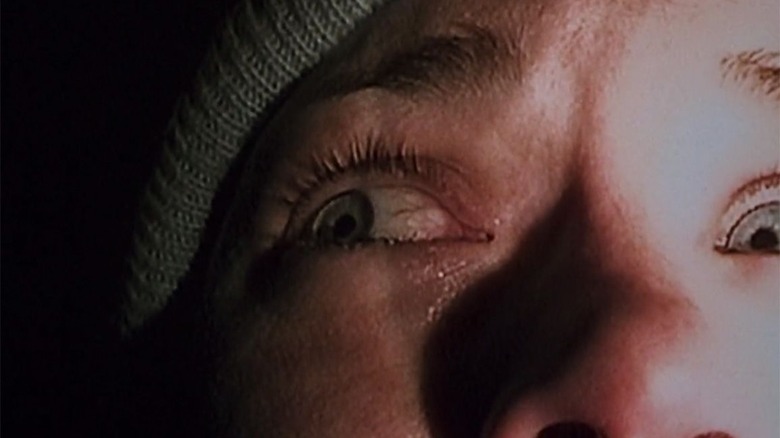
A found-footage film that needs no introduction, Daniel Myrick and Eduardo Sánchez's "The Blair Witch Project'' claims to tell the story of three student filmmakers who disappeared after trekking into the Black Hills near Burkittsville, Maryland, to film a documentary about a local legend. One of the most successful independent films ever given its no-budget origins, "The Blair Witch Project" holds up as a terrifying paragon of found-footage horror (as well as the movie responsible for popularizing the format).
Much of the film's success can be traced back to the highly convincing nature of its cinema-verité presentation: Heather (Heather Donahue), the crew's director, wields a color camcorder, while cinematographer Josh (Joshua Leonard) operates a 16mm, black-and-white camera, and Mike (Michael Williams) does the sound. Together, this trio's footage makes up everything audiences see, from unsettling stick figures hanging in the trees to ominous sounds that ring out as they become hopelessly lost in the forest.
But what makes the film so effective, even more than its many imitators, is its insidious manner of weaponizing the audience's imagination, leaving the exact nature of the terrors befalling its characters ambiguous so that the audience fills in the blanks itself. "I'm scared to close my eyes, I'm scared to open them!" says Heather at one point, pinpointing the spine-chillingly effective power of this all-time horror classic.
Paranormal Activity
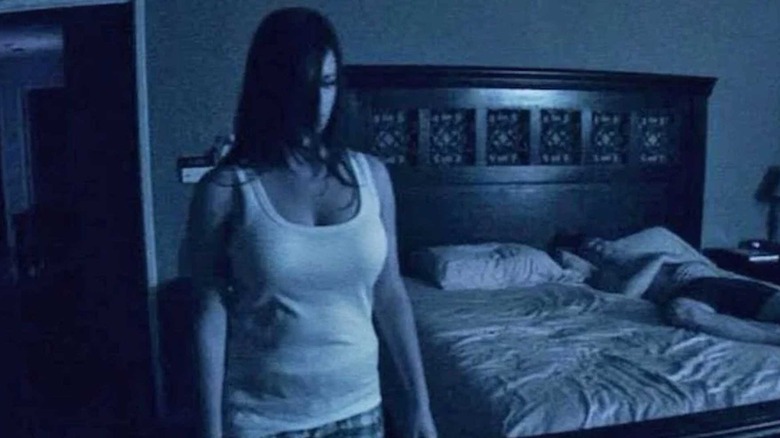
A watershed moment for the found-footage format, Oren Peli's "Paranormal Activity" first struck the festival circuit like a bolt from the blue, sparking audience walkouts; many felt too frightened to keep watching. Its theatrical release proved such a sizable success that the film (shot for just $150,000) is generally considered the most profitable movie ever made, and five sequels of varying quality followed.
But few horror films since have matched the full-force tension of the first "Paranormal Activity," in which couple Micah (Micah Sloat) and Katie (Katie Featherston) set up a camera to surveil the otherworldly presence haunting them at home. The genius of Peli's stationary camera placements is how this approach implores the audience to search every inch of the frame for terrors that are hidden in plain sight. Mounted on tripods around the house, these static cameras contribute to a near-constant sense of dread, locking the audience in for whatever frights a given night might have in store.
Though the entity that's attached itself to Katie starts out small, "Paranormal Activity" builds in intensity until it reaches a conclusion that ranks among the scariest in cinematic history. It involves Katie, either sleepwalking or possessed, standing next to the bed, staring at a slumbering Micah; two hours pass on fast-forward as she sways, motionless, and we watch, helpless.
Grave Encounters
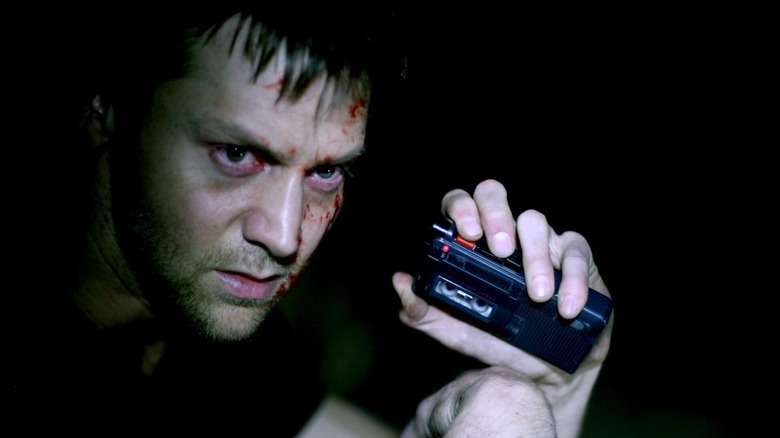
Gleefully sending up the "ghost hunters" reality TV craze of the early '00s while delivering surprisingly high-voltage jump scares of its own, "Grave Encounters" is one of the lesser-known found-footage films on this list, but earns its place through sheer commitment to its kooky-creepy bit.
Credit Colin Minihan and Stuart Ortiz, together known as filmmaking duo the Vicious Brothers, with wringing genuine suspense out of their somewhat jokey premise: a production crew that voluntarily locks themselves inside an abandoned mental hospital in hopes of documenting some spooky and unexplained phenomena. Suffice to say, they get what they came for. Spectral forces torment the crew subtly at first, then less so. One character goes missing in the night. Inexplicably, the daybreak so eagerly awaited by the characters never comes, as the crew is drawn deeper into an impossible maze of shadowy hallways and unmarked tunnels.
What becomes clear through these distortions of time and space is that the characters have stumbled across a spirit realm, one that does not tolerate the kinds of silly provocations a reality show requires. "Grave Encounters" wasn't particularly well-received upon its release, but horror fans have reassessed the film positively in recent years, particularly praising the film's tongue-in-cheek critique of reality-TV hucksters whose ultimate fates will feel like just desserts to plenty of horror aficionados.
[REC]
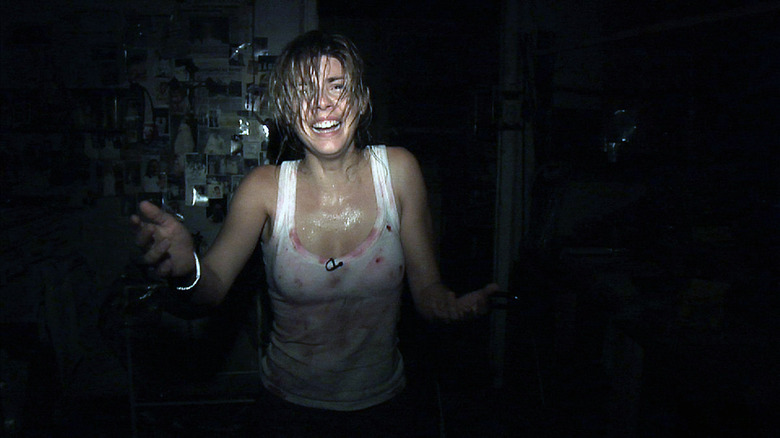
"The Blair Witch Project'' spawned countless imitators, many of which mistook that film's shaky-cam style and abrupt ending as strengths that could be easily replicated through mimicry, rather than techniques employed by talented filmmakers with a singular vision. The breathlessly clever, relentlessly terrifying Spanish production "[REC]," released in 2007, is too sophisticated a film to fall into such traps. Instead, Jaume Balagueró and Paco Plaza's contribution to found-footage takes a claustrophobic, conceptually terrifying premise, then forces audiences to ride it out with the characters.
After a TV news crew pushes its way into a Barcelona apartment complex, the block is sealed off as part of a quarantine procedure. Trapped inside, the crew faces a zombie outbreak that tears like wildfire through an assortment of firemen, police officers, and apartment residents. "[REC]" particularly relishes withholding its scares, ensuring that viewers are as on edge about what they're not seeing (and what they might be about to).
The ending of "[REC]" perfectly illustrates the visceral dramatic power of the found footage format, as an escape through the basement plunges the characters into pitch-black darkness. Night-vision is utilized to tremendous effect, and an onslaught of infected assailants overwhelms the lens. As the sound is reduced to panicked whimpers and disembodied snarls, then cuts out entirely, "[REC]" strips the audience of its senses, forcing them to share the characters' inability to see what's coming.
Cannibal Holocaust
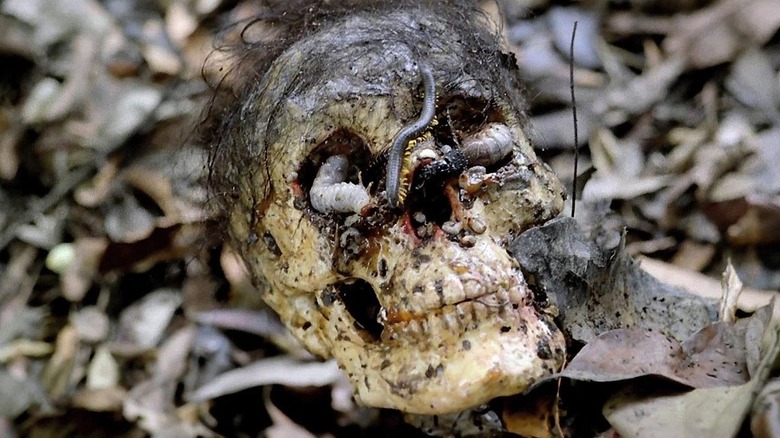
1980's "Cannibal Holocaust" is one of the most controversial films ever made, but its early use of found footage laid the groundwork for every other film on this list. Supposedly consisting of real, unedited footage shot by a documentary film crew that went missing in the Amazon while on a mission to film indigenous cannibal tribes, Italian provocateur Ruggero Deodato's film still revolts audiences today. With its relentless barrage of murders and sexual assaults (both of which were staged) and animal killings (which were not), the film is forthright about presenting its characters' so-called "exploration" as gruesome, barbaric exploitation.
As a critique of tabloid journalism and sensationalized TV news reporting, "Cannibal Holocaust" can be read as one long, sick joke. But Deodato's impressive filmmaking -- the almost dreamlike eeriness of the film's descent into a familiar heart of darkness, the deliberately degraded, scratchy video that emulates what one might expect from recovered footage -- makes "Cannibal Holocaust" as tough to ignore as it is stomach.
No other film on this list can claim to have landed its filmmaker in a courtroom, but that was the ordeal endured by Deodato, who premiered the film in Milan and was arrested shortly thereafter on obscenity and murder charges (he was convicted of the former, but getting the actors he'd ostensibly murdered to confirm they'd survived was enough to beat the latter).
Lake Mungo
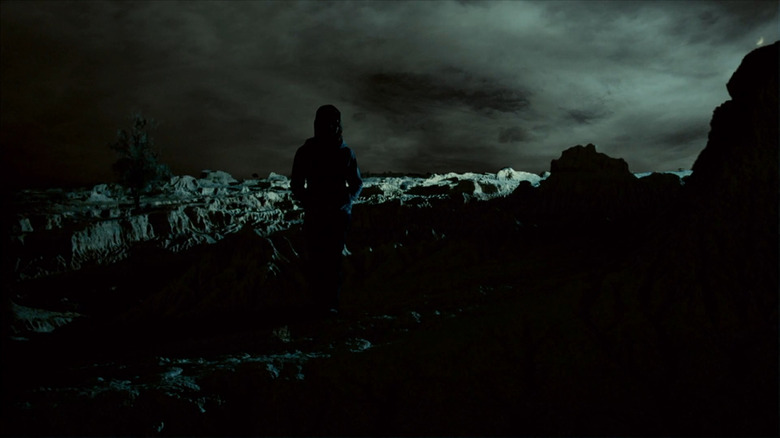
An Australian import distinguished by its unusually painful, precise exploration of familial grief, 2008's "Lake Mungo" is framed as a documentary about a family reeling from the accidental drowning of their teenage daughter, Alice (Talia Zucker). A modest success upon its original release, writer-director Joel Anderson's psychological horror-drama is experiencing a critical reappraisal as more audiences discover what stands as one of the most indelibly haunting ghost stories to utilize the found-footage format.
As Alice's secret life reveals itself to her grief-stricken parents, they begin seeing what they believe to be her spirit in family photographs and home videos, and summon a local psychic to make sense of these inexplicable yet reassuring sights. As "Lake Mungo" unravels the mysteries of Alice's young and tragic life, the film becomes more solemn and slower-burning than others on this list, but the subtlety of its scares -- often lurking in the background of otherwise placid scenes, waiting to chill an observant viewer's blood -- suits the mournful qualities of the overarching narrative.
The actors' performances, too, are roundly terrific, capturing the existential confusion and anguish of a family coping with an unfathomable loss. And there's something to be said for the film's deliberate, unshowy build, which pays off with one of the saddest, scariest, most psychologically devastating jump-scares ever filmed. You'll know it when you see it, and you'll feel it for weeks after watching.
The Taking Of Deborah Logan
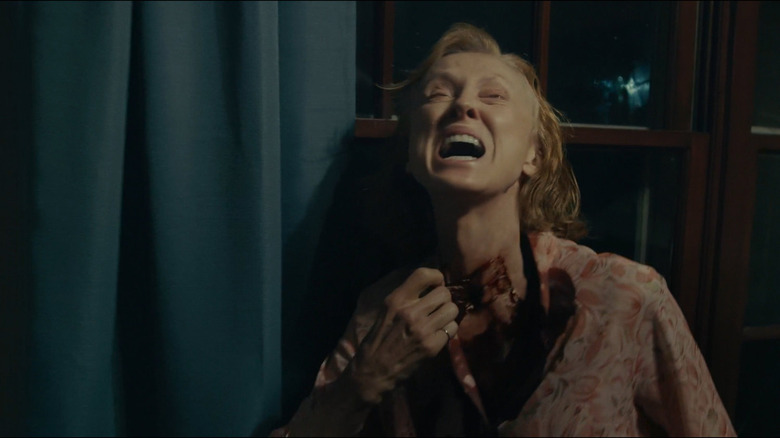
Adam Robitel has since emerged as a steady hand in the Hollywood horror world, handling the fourth "Insidious" movie and architecting the budding "Escape Room" franchise. But his best film to date remains 2014's "The Taking of Deborah Logan," an unusually thought-provoking found-footage horror film about the ravages of Alzheimer's -- one that doubles as a cruelly effective supernatural freak out.
When an elderly woman (Jill Larson) agrees to let a film crew document her deteriorating state of mind, none of them are prepared for what follows. Atmospheric, well-paced, and genuinely unsettling, "The Taking of Deborah Logan" is unusually sophisticated in how its format shifts with the story, becoming more frantic as the crew changes the focus of their film from a medical documentary to a chronicle of the unexplained incidents surrounding their subject. By the time that the film crew tracks Deborah to a menacing mineshaft where young girls were murdered in a cannibalistic ritual many years earlier, "The Taking of Deborah Logan" has relinquished all pretenses of journalistic remove, making for one of the more forcefully nerve-shredding found-footage finales in recent years.
Though Robitel eventually offers up supernatural possession as a genre-appropriate explanation for the forces assailing its main character, the film's sensitive and delicate treatment of an older woman losing her mind actually deepens the impact and intensity of its best scares.
Host
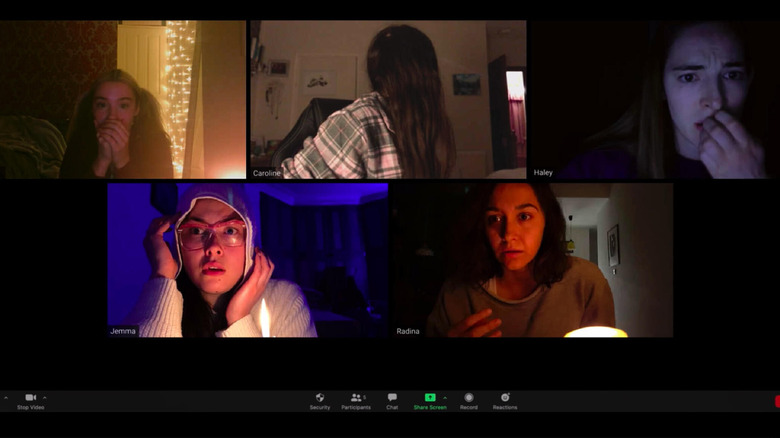
At the beginning of the pandemic, filmmaker Rob Savage decided to make a horror film that reflected the forced isolation and virtual connectivity of the COVID-19 era. Partnering with writers Gemma Hurley and Jed Shepherd, Savage enlisted a crew of actors who worked remotely to shoot scenes for "Host," a horror movie about friends who decide to perform a seance over Zoom and inadvertently invite supernatural activity into their homes.
Lean, mean, and brutally effective, this 56-minute frightfest wastes little time before subjecting its extraordinarily expressive (and believably terrified) cast to a rapidly escalating series of demonic intrusions. What makes "Host" such an unusually clever and exciting found-footage film -- not to mention a valuable encapsulation of this hyper-anxious cultural moment -- is the imagination with which Savage exploits the specific anxieties of lives spent simultaneously online and alone. For all the time we commit to speaking with friends over an internet connection, none of them can intervene or do more than watch what's happening on our screens, however horrifying that is.
When one character starts typing in the chat, and their messages come across as a garbled mash, the possible explanations for this barrage are almost as scary as the reveal. "Host" is framed as a recording of a Zoom call from Hell, and Savage's ability to follow through on the setup's promise makes for a film more clever than anyone could've expected.
Hell House LLC
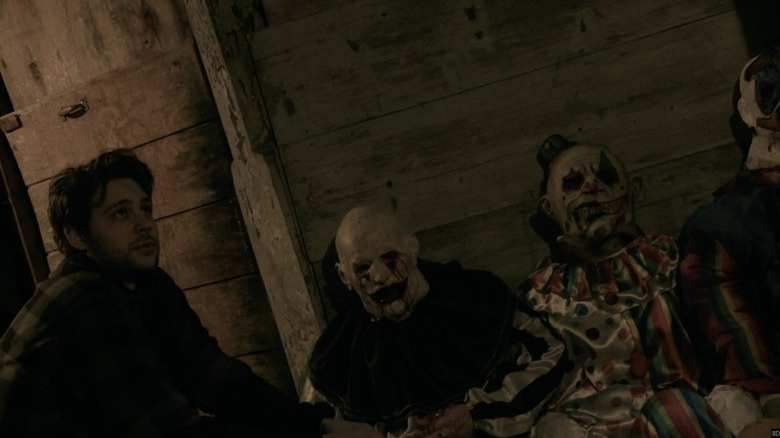
Executed with a level of intelligence and conviction that's rare in horror filmmaking writ large, let alone found footage, Stephen Cognetti's 2015 gem "Hell House LLC" follows a documentary crew's efforts to uncover the truth about an unexplained malfunction that led to the deaths of 15 tour-goers and staff on the opening night of a Halloween haunted house tour. Interviewing the only surviving staff member, the crew is entrusted with never-before-seen footage shot by Hell House employees.
As such, Cognetti's film leaps backward in time, depicting the lead-up to the night of the tragedy as Hell House team members sort through cobwebs and creepy clown dolls to set up their attraction inside the abandoned Abbadon Hotel. As opening night approaches, "Hell House LLC" ratchets up the tension, offering one particularly novel twist on found-footage conventions: Smart-alecky team members take us behind the scenes of the scares they're staging, only to notice props that have inexplicably moved out of place.
This game of who's-spooking-who builds to a series of blood-curdling reveals in the film's third act, as the Hell House itself becomes a more active participant in the terror. What if a house wasn't just haunted, but somehow predatory, lying in wait for victims and sending out its own emissaries to lure in fresh quarry? "Hell House LLC" is so fiendishly well-executed that it fully sells this freaky premise; repeat watches reveal extra scares functioning on an almost subliminal level.
Cloverfield
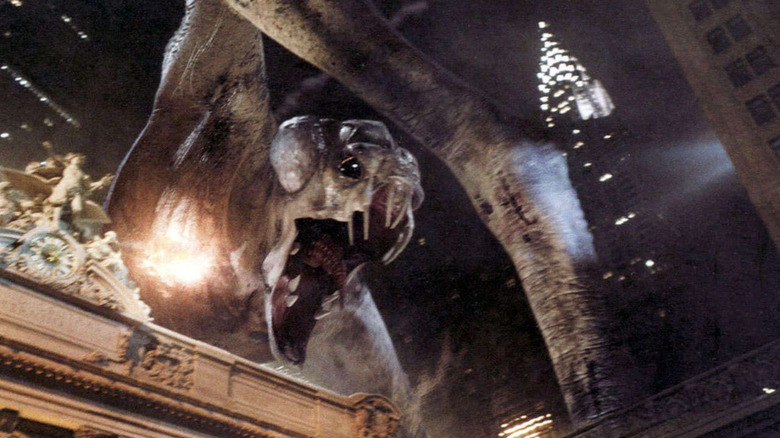
One of the most high-profile found footage films in recent years, "Cloverfield" follows five New York residents forced to flee as a massive, unexplained creature rises out of the ocean and lays waste to the city. As the protagonists move through crumbling skyscrapers and decimated New York landmarks, shaky-cam techniques immerse the viewers in their frantic, sustained efforts to escape all this inner-city carnage.
But director Matt Reeves, working in tandem with producer J.J. Abrams, keeps the "Cloverfield" monster off screen for hefty portions of the film, lingering on shots of bloodied civilians stumbling out of the rubble and achieving the film's most heart-in-mouth terrifying sequence when the characters climb one skyscraper to rescue their friend from another that's collapsed against it.
Though the central monster -- and the tentacled offspring it sends scuttling and springing through subways -- is a terrifying sight, "Cloverfield" more boldly evokes images of the aftermath of the 9/11 attacks, many of which were taken by horrified bystanders and none of which could employ a lens wide enough to capture the extent of the destruction. "Cloverfield" similarly draws its horror from the dread and disorientation of those at ground zero, offering a kind of overdue catharsis that allows audiences to process the sudden, senseless violence of inner-city destruction while containing it within a genre-movie framework -- and presenting a towering monster onto which such fears can be easily, safely projected.
Gonjiam: Haunted Asylum
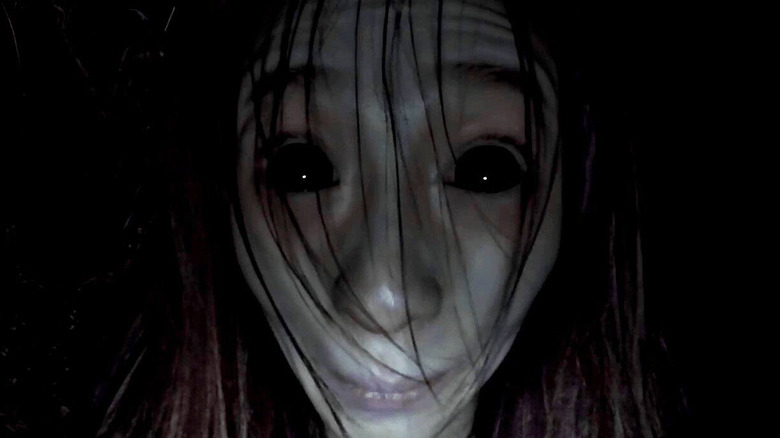
South Korean filmmaker Jeong Beom-shik is the force behind this little-seen but extremely hair-raising 2018 rollercoaster, which centers on a crew of volunteer YouTubers -- overseen remotely by team leader Ha-Joon (Wi Ha-Joon) -- who break into the notoriously haunted asylum of the title, hoping to score enough freaky footage to drive up view-counts for their horror web series.
What helps to set "Gonjiam: Haunted Asylum" apart from other, similar films is the slickness of its presentation. The characters utilize modern technology to shoot their videos, and all of them are professionally trained, allowing for smooth, graceful camera movements that make sense within the story. Jeong also ladles on the ominous, shadow-soaked atmosphere, establishing an uncommonly deep, dark labyrinth of abandoned corridors through which to guide his intrepid, increasingly fearful characters.
Amusingly, as the protagonists encounter both real supernatural forces and staged pranks that Ha-Joon has orchestrated, "Gonjiam: Haunted Asylum" heightens its realism by switching between point-of-view shots and first-person close-ups that mirror the feel of a video upload. Innovative techniques such as these ultimately elevate the film's scares, creating about as authentically harrowing a "live-streamed" horror as you're likely to find.
Noroi: The Curse
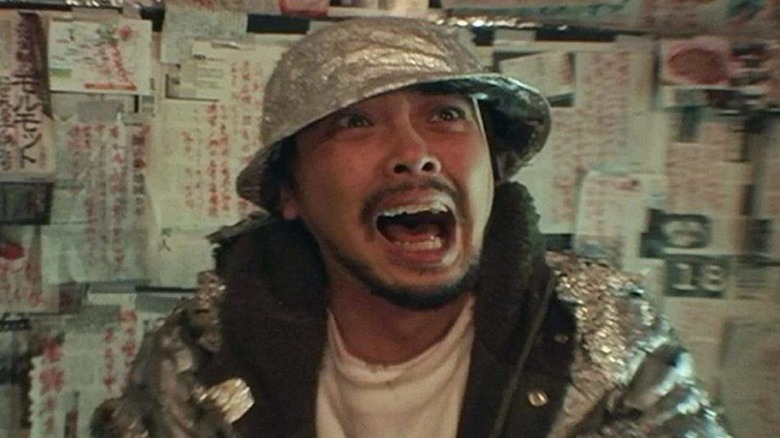
Found footage films don't often aim as high as this 2005 J-horror offering from director Kōji Shiraishi about the efforts of paranormal researcher Masafumi Kobayashi (Jin Muraki) to make a documentary about a series of uncanny, seemingly unconnected events. Positioned as footage recorded by Kobayashi's cameraman and released as a cohesive documentary -- complete with news broadcasts, interviews, and 16mm film footage depicting a rare ritual -- in the wake of his unsolved disappearance, "Noroi: The Curse" is impressively ambitious and cumulatively terrifying.
As Kobayashi's research brings him into contact with a psychically gifted child (Rio Kanno), a tin-foil hat-wearing madman (Satoru Jitsunashi) who speaks of "ectoplasmic worms," and a woman who can't shake the sound of babies wailing inside her home, director Shiraishi takes the time to gradually weave plot threads together, allowing for plenty of eerie, shiver-inducing moments along the way. As Kobayashi follows the trail of an ancient demon named Kagutaba, "Noroi: The Curse" escalates in every conceivable way, becoming more dramatically compelling and conspicuously well-crafted even as its scares go from merely unsettling to full-on nightmare fuel.
Read this next: 14 Korean Horror Movies You Need To See
The post The 12 scariest found footage horror movies appeared first on /Film.
0 Commentaires